How to Sandblast Metal | Complete Guide
 Aug 31,2023
Aug 31,2023

The surface finish for metals can be done through different methods but all these metal restoration processes include pre-cleaning of the surface. The sandblasting technique is a mechanical method of cleaning a surface. The sandblast finish also causes roughness of the surface. In this metal surface preparation, the abrasive grits are bombarded on the surface of the base metal through compacted air. The sandblasting technique causes the removal of contamination like dust, oil particles, and water, and also helps in the removal of the oxide layer of metals which is a very important pre-treatment for good surface finishing of metal. Sandblasting metal quotes not only the cleaning of the surface but also increasing mechanical properties and surface quality.
What is Sandblast
Metal restoration technique named Sandblasting technique which helps in surface preparation and cleaning the surface. Surface finish for metal requires the removal of contamination, imperfections, and coatings removal which can be achieved by sandblasting. The sandblasting technique helps in altering the surface texturing of metal. Sandblasting finish also enhances the mechanical properties of the material. Sandblasting surface texturing for metal is not an environmentally friendly apparatus and also requires a lot of PPEs for workers to perform the Sandblasting technique.
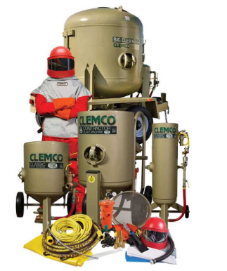
Sandblasting technique apparatus
YouTube video on the sandblasting technique.
What is the purpose of sandblasting
The sandblasting technique is pretreatment done before surface finishing of metal, metal premier coating, painting surface, or bonding. These protective coatings for sandblasting metals may be done to enhance the surface properties like corrosion protection, and wear resistance and provide aesthetic looks to parts. Sandblast finish are also used for surface roughness and surface texturing of metal. The Sandblast technique helps in creating decorative and etching finishings by creating intricate designs and forested glass effects. The main purpose of sandblasting finish is to clean the surface before surface finishing of metal with coatings, bonding, and metal primers. This sandblasting cleaning helps in better adhesion of the coating to the base material.
Types of metal that can be sandblasted
Material that can be sandblasted includes glass, stone, metals, wood, plastics steel, Brass, Aluminum and silver, etc. Material required for sandblasting is abrasive media with 80 grit size which is around 0.007, Sand, Aluminum oxide which can last 30X-40X over sand, glass beads, garnet, black magic, and walnut shell.
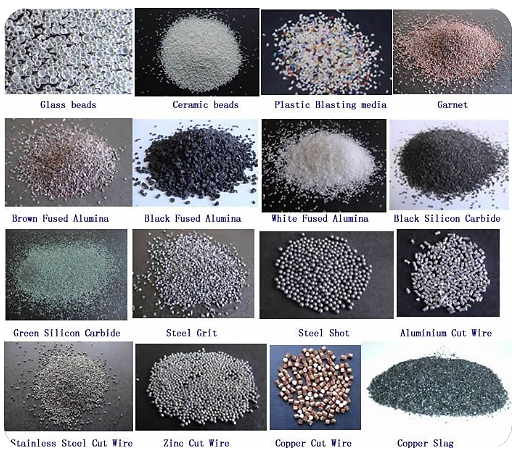
Abrasive media used for Sandblasting technique.
What does sandblasting do to metal
Sand blasting causes the bombardment of particles with high speed to the surface of metal causing the enhancement of the mechanical properties of the metal surface. It causes the strain hardening of the surface, increasing its hardness by decreasing the grain sizes of the metal. This process also causes an increase in the fatigue life of the metals.
Mohd Rashdan Isa, Omar Suliman Zaroog, Muhammad Aiman Yunus, Vignesh Rao Sanny Bavu, and Norzulhilmi Rosmi have investigated the effect of sandblasting on the surface of ASTM A516 Grade 70 carbon steel. Results show that hardness increased with the sandblasting time as shown in the graph below.
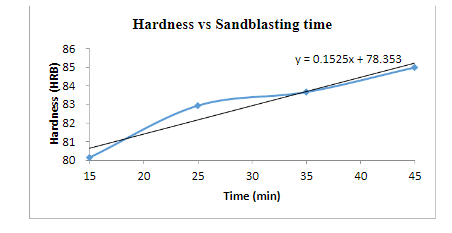
The testing shows that tensile strength is increased as compared to sandblasted metals.

The fatigue life of the metal is also increased after sandblasting it. The incrementation after the test is shown in the figure below.

Blasting media grit chart
Sandblasting is a pretreatment for metal surface preparation that uses abrasive material blast on the surface of the base material. Abrasives material shape size, density, and hardness in determining sandblast finish.
Size
Sandblasting application uses abrasive media depending upon the surface texturing of metal. Large particle gives large indentation with fewer impact. Small particles provide a smoother surface finish for metal with high impact and low indentation. Abrasive material for metal restoration techniques is measured in microns, grit size, and mesh sizes.
Shapes
There are four media shapes used angular, sub-rounded, sub-angular, and round. The shapes of media show that how deeply they will penetrate into the surface. The roughness of the surface texturing of metal depends on these shapes.
Hardness
The Mohs scale of mineral hardness is used to measure the sand-blasting abrasive material. Large Mohs scale numbers show high hardness like aluminum oxide has a 9 Mohs score while plastic has a 3 to 4 Mohs scale score.
Density
The denser particles have more impact on a small surface area as compared to less dense particles. Dense Sandblast abrasive particles absorb less energy upon impact and deform less. Density highly affects the sandblast finish. Density is measured in specific gravity number steel grit are denser with 4.8 to 7.8 as compared to aluminum oxide which is 3.94 to 3.96.
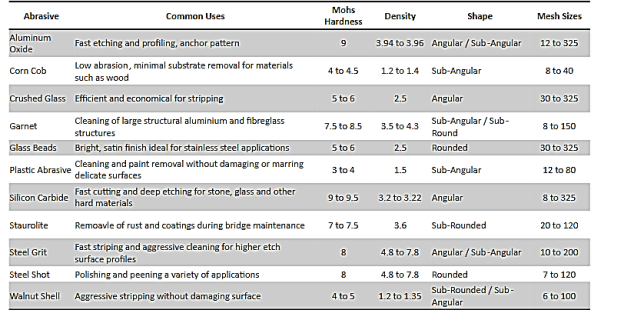
Sandblasted metal flow rate
Sand blasting metal quotes a flow rate depending on air compressor. Smaller sandblasting tank uses air compressor of 10-20 CFM while 18-35 CFM is used for large jobs but is expensive. Similarly, for industrial scale 50-100CFM is used.
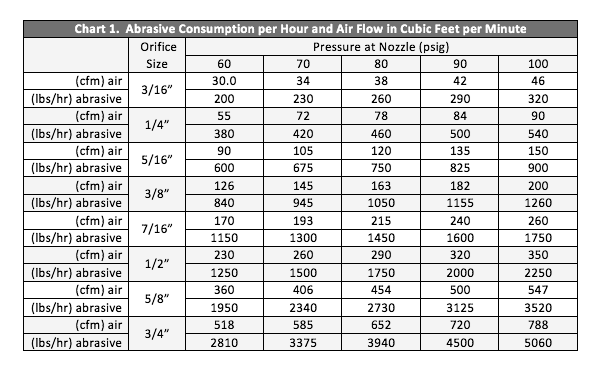
How to Sandblast Metal: 5 Way
Sand blasting method by which any surface can be modified to make it more rough, smooth, cleaned as pretreatment for excellent coatings and metals premiers. Protective metal coatings are necessary for protecting parts from environment in their service life time.
There are different protective coatings for sandblasting used after sandblasting like paints, metal coating, and metal premiers.
There are different metal restoration techniques one of which is sandblasting techniques. Five types of sandblasting techniques are listed below.
Sandblasting machinery
High-velocity silica particles are projectile to the base material. Quarts and silica are used as abrasive materials for surface texturing of metals. This metal restoration technique is used in removing old paintings and rusty oxidized layers from old metal parts after which protective coatings for sandblast are done. Used for diverse surfaces where versatility is required. silica produces silicosis which is the major cause of lung cancer. That is why this process is a risk to the environment and is no longer in use.
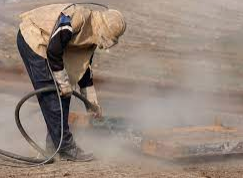
Sandblasting for surface restoration of metals.
Wet blasting
Air blasting big problem that is solved by inventing wet blasting. The wet sandblasting technique controls the amount of airborne dust that is produced in the blasting metal restoration technique. The water is mixed with the abrasive material and ejected by the nozzle. Water with abrasive material hits the surface helping in cleaning the surface quickly without the production of heat. These are done on surfaces that require limited air-blasting products.
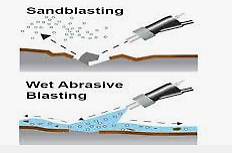
Figure showing the difference between sandblasting and wet blasting.
Vacuum blasting
The other name for vacuum blasting is dustless blasting because the vacuum used, sucks the propelled abrasives and surface contamination and then is sucked back to the control unit. Vacuum blasting recycled the abrasive material making it a cost-effective metal restoration technique. However, it’s a slower process as compared to other sand-blasting techniques because of the vacuum. Minimal debris creepage production in the environment is the major success of this technique.
Centrifugal blasting
Motor wheel projectile is an abrasive material with high speed to the surface that needs to be cleaned that why also known as wheel blasting. The surface texturing for metals by this technique produces a cleaner and more uniform surface without the use of an air compressor. This machine is large in size and is not portable. The centrifuge sandblasting applications are for surfaces that require a uniform and effective cleaning finish with continuous abrasive blasting.
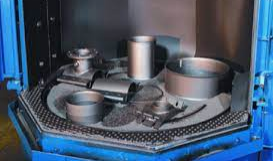
Centrifugal blasting apparatus.
Soda blasting
The new method uses sodium bicarbonate as abrasive material projectiles on the surface of the base material with an air compressor. This is a gentler form of abrasive that requires less pressure and produces smooth surfaces. Used mainly for soft surfaces like plastic, glass, and chrome which can be damaged by other strong abrasives.
Sandblasted metal finish
Metal restoration process of sandblasting remove the surface contamination, old damaged coatings and rusty oxidized surfaces. Provide contamination free smooth sandblast finish as shown in figure below.
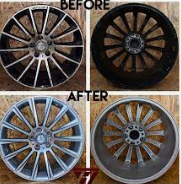
Before sandblast and after sandblast images
What is Sandblasting Used For
Helps in surface restoration of metals by removing paints, oxidize residue, and rust very efficiently and quickly. Help in the removal of casting marks and scratches. It helps in achieving a smooth aesthetic look to parts. Also, helps in forming decorative aesthetic patterns on the different parts. Sandblasting enhances the mechanical properties of metal by stain hardening the surface.
Sandblasting jewelry
Sandblast finish jewelry is matt and does not reflect or shine. Sandblasting Abrasive corundum, plastic, glass, and blast furnace slag are used with air compressors. It provides an aesthetic smooth matt finish to the surface. Not only metal rings, necklaces, pendants, and bracelets are matted by sandblast finish but glass pearls can also be matted by sandblasting.
Sandblasting in Dentistry
Sandblasting is not only good for metal surface preparation procedures but can also be used in cleaning your teeth. Sandblasting help in improving oral hygiene by simple standard method. The high-pressure suspension containing cleaning agents is projectile on the teeth surface. The granular particles added to the suspension are called dental sand. The suspension must contain particles that are strong enough to remove scaling and contamination from the surface but gentle enough to not damage the enamel. The most common abrasive material is sodium bicarbonate for teeth sandblasting.
Shot blasting process on steel
The removal of oil, paint, and rust is done in steel by shot blasting technique. Shot blasting technique is the common metal surface restoration process used to clean steel. Shot blasting uses tiny balls of steel to effectively clean the steel tubes and pipes. It’s mainly used for steel surface finish. It provides unique surface texturing to steel metal and better paint and metal premiers’ adhesion to the surface.
Sandblasting metal furniture
The old metal furniture covered with accumulated grime and rust can be cleaned by sandblasting. sandblasting removes the paint, rust, and old oxidized metal that resides on the surface by mechanical erosion. surface finishing for metal furniture requires sandblasting as pretreatment which is then moved for protective coatings for sand blasting.
Best Sandblaster for Metal
Best sand blaster abrasive material for metal includes steel shoots, steel grit, corn cob, walnut shell, and StarBlast different parameters of them are given below in table.
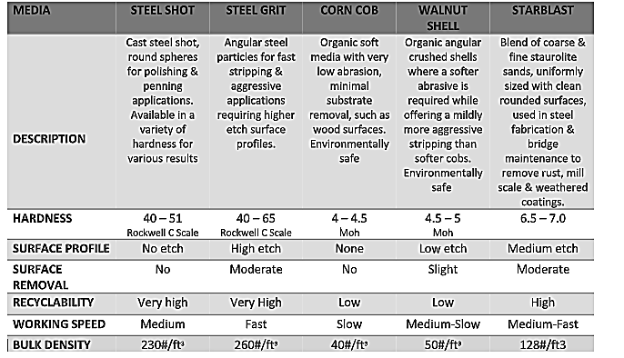
Best sandblaster for metals
How to Prep Metal for Paint after Sandblasting
After sand blasting check the surface that no debris, contamination or old painting left on the surface. After that apply a metal primer recommended for specific metal and surface. Do use surface filling to fill the scratches or pits on the surface of the metal. Immediate coating of paint must be done after the sandblast finish so that the oxide layer on the metal surface does not re-form itself. Finish with the best metal primer for a better reflective surface finish.
Do Any of Apply Body Filler to Sandblasted Metal?
Yes, applying filler to sandblasted metal is part of the surface restoration process. After the sandblasting, the surface does have irregular pits and scratches that should be filled with the filler material. Use the filler material with the best compatibility to paint you have to do afterward. Mix the filler components as described by the manufacturers of filler materials. After applying filler leave the surface until it dries completely.
How to Clean Metal after Sandblasting
Use a high-pressure air blower to remove the sandblasted debris, contamination, and abrasive material left on the surface. With acid cleaner swipe the surface using a clean cloth thoroughly many times until completely cleaned. Also, use the best metal premier for excellent metal protection and finish.
YouTube video showing cleaning of metal surface after blasting.
How to sandblast rust off metal
High-speed particles of the sandblast mechanically erode away the oxide surface of the metal. This rusting off by sandblasting helps in the surface restoration of old metal parts. And also, as a pretreatment of coating of metal with strong oxide layers like aluminum and titanium.
Pros and Cons of Sandblast Metal
Advantage
Abrasive material has abrasive action on the sandblast finish parts. The Sandblast technique helps remove contamination from hard and tough surfaces like concrete. Sandblast techniques can be used on different materials depending on the type of abrasive material used. The sandblasted technique helps in the fast removal of contamination as compared to other different materials. Complex machinery is not required in abrasive blasting.
Disadvantages
For smooth surface finishing of metals sandblasting technique is not suitable because of its rough surface texturing for metals. Soda blasting can be used for smooth surface finishing of metals. Different sandblasting applications use different Abrasive materials depending on the surface texturing for metal required for that particular application. This metal restoration process cleans the old oxidized surfaces but changes the surface mechanical properties like strain hardening the surface increasing its hardness and fatigue life. The use of silica cause serious health hazards that’s why is banned in many countries. Proper precaution requirements while performing sandblasting techniques like proper PPE wearing requirement. High heat generation due to pressurized particle blasting on the surface. This heat generation causes the microscopic changes of the surface in metal to cause properties changes.
Why Choose China Tuofa Custom Metal Sandblasting Services
Tuofa provides the best metal sandblasting service all over China. Tuofa has highly advanced sandblasting techniques that are handled by experienced and professional workers. The Tuofa service providers are experienced and trained. They can understand your demand and can give you good technical advice for a better sandblast finish to your product.
Sand blasting metal quotes
For further information, you can visit their website www.tuofa-cncmachining.com, Or contact the support team info@tuofa-cncmachining.com
 Tel/WeChat:
Tel/WeChat:  Email:
Email: 
 Home
Home
 What is Anodized Copper | Ultimate Guide
What is Anodized Copper | Ultimate Guide 







